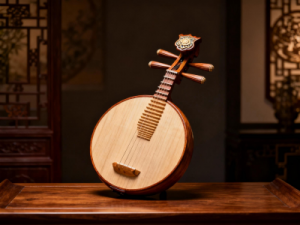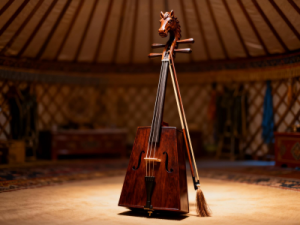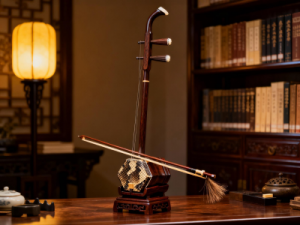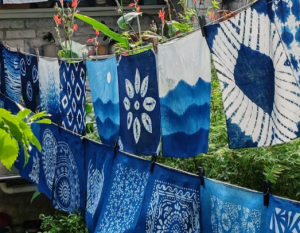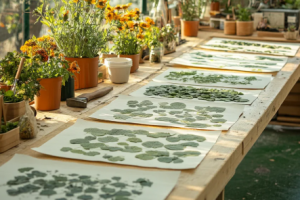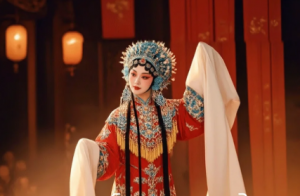In the heart of China’s cultural legacy, beyond the melodies of ancient tunes, lies an art form where wood, bamboo, and silk transform into vessels of emotion and history. The craftsmanship of traditional Chinese musical instruments represents a perfect harmony between human ingenuity and natural materials—a heritage where every chisel mark and polished surface carries echoes of millennia.
Echoes of Antiquity: A Historical Journey
The story of Chinese instrument making begins in the dawn of civilization, with archaeological discoveries revealing an sophisticated musical culture that flourished thousands of years ago.
-
Neolithic Origins
The Jiahu archaeological site in Henan province has yielded the world’s oldest playable musical instruments—bone flutes dating back approximately 8,000 years. Crafted from red-crowned crane wings, these flutes with five to eight holes demonstrate remarkable acoustic understanding from prehistoric times. -
The Bronze Age Zenith
During the Shang and Zhou dynasties (c. 1600–256 BCE), bronze casting reached unprecedented levels, giving birth to magnificent ritual instruments. The most spectacular were bianzhong (chime bells)—sets of precisely tuned bronze bells that could produce two distinct tones depending on where they were struck. The tomb of Marquis Yi of Zeng (433 BCE) revealed a complete set of 65 bells spanning five octaves, representing one of history’s most astonishing acoustic achievements. -
The Silk Road Exchange
As trade routes connected China to Central and West Asia, instrument makers began incorporating foreign influences. The pipa (pear-shaped lute), erhu (bowed string instrument), and suona (double-reed horn) all evolved from this cultural cross-pollination, adapted and refined by Chinese artisans into distinctly local forms.
The Maker’s Touch: Materials and Techniques
Traditional instrument making follows the principle of “因材施艺” (working according to the material’s nature), where artisans select and shape materials through time-honored methods.
Material Selection:
-
Bamboo: Carefully aged for years to prevent cracking, used for flutes like dizi and xiao
-
Woods: Paulownia for guqin zithers for its resonant quality, rosewood and sandalwood for pipa frames
-
Silk: Traditional strings for instruments like guzheng and guqin, producing warmer, more nuanced tones than metal
-
Snakeskin: Python skin stretched over erhu resonators creates their distinctive vibrating quality
-
Gourds: Used as natural resonance chambers for instruments like hulusi
Crafting Process:
The creation of each instrument follows a meticulous process that blends technical precision with artistic intuition. For a guqin, this might involve:
-
Selecting aged paulownia wood that has been seasoned for decades
-
Hollowing the body to create the resonance chamber
-
Applying multiple layers of natural lacquer mixed with deer antler powder
-
Inlaying mother-of-pearl markers
-
Stringing with hand-twisted silk strings
-
Tuning and voicing through subtle adjustments to the wood thickness
As the saying goes, “良工不示人以璞” (a good craftsman never shows unfinished work)—each instrument represents countless hours of invisible refinement.
Regional Traditions: A Symphony of Diversity
China’s vast geography has given rise to distinct instrument-making traditions:
-
Suzhou Guqin School
For centuries, Suzhou has been renowned for guqin makers who perfected the “清微淡远” (clear, subtle, light, and distant) aesthetic. The Xu family during the Ming Dynasty established standards that influence makers to this day. -
Beijing Bowed Strings
The capital specialized in erhu, jinghu (Peking opera fiddle), and other bowed instruments, with masters known for their bright, penetrating tones ideal for theatrical accompaniment. -
Yunnan Minority Instruments
The diverse ethnic groups of Yunnan create unique instruments like the hulusi (gourd flute) and qixianqin, often incorporating intricate tribal patterns and local materials.
Modern Resonance: Challenges and Innovations
The 20th century brought unprecedented challenges as Western instruments gained popularity and traditional masters aged without successors. However, recent decades have witnessed a remarkable revival.
Preservation Efforts:
-
UNESCO Recognition: The guqin was proclaimed a Masterpiece of the Oral and Intangible Heritage of Humanity in 2003
-
Living Treasures: The Chinese government has designated master craftspeople as “非物质文化遗产传承人” (Intangible Cultural Heritage Inheritors)
-
Institutional Support: Vocational schools and university programs now offer instrument-making courses
Contemporary Innovations:
-
Material Adaptation: While preserving traditional methods, makers experiment with sustainable alternatives to endangered materials
-
Acoustic Refinement: Incorporating scientific understanding to improve instrument design while maintaining traditional character
-
Cross-Cultural Fusion: Creating instruments that bridge Eastern and Western musical traditions
The Craftsmans’s Philosophy: More Than Making
Behind every great instrument stands a maker with extraordinary dedication. The journey to mastery typically begins in one’s teens, requiring at least a decade of apprenticeship before working independently. As 84-year-old guqin maker Wang Pin observed, “A tree must grow for fifty years before it becomes worthy of becoming a guqin. How can a person hope to master the craft in less time?”
This patient accumulation of skill embodies the Chinese ideal of “匠心” (the artisan spirit)—the pursuit of perfection through quiet devotion rather than recognition.
Cultural Significance: Instruments as Living History
Traditional Chinese instruments represent more than musical tools—they are physical manifestations of Chinese philosophical concepts:
-
The guqin embodies Confucian scholarship and Daoist naturalism
-
The erhu expresses the emotional depth of Chinese opera
-
The bamboo flute captures the Buddhist appreciation of simplicity and impermanence
These instruments have soundtracked imperial ceremonies, scholarly contemplation, folk celebrations, and religious rituals for millennia, making them living repositories of Chinese cultural memory.
Conclusion: Preserving the Voice of Tradition
In an era of digital reproduction and mass manufacturing, the handmade traditional instrument represents a vital connection to China’s cultural soul. Each instrument carries not just sound but stories—of the tree that provided the wood, the artisan who shaped it, and the generations of musicians who brought it to life.
The future of this intangible cultural heritage depends on a new generation of makers willing to dedicate themselves to this demanding yet profoundly rewarding craft. As master instrument maker Li Xiangting reminds us, “We are not just making objects; we are creating vessels for cultural transmission, for emotions that words cannot express.”
Through their skilled hands, the ancient melodies continue to find their voice, ensuring that the soulful sounds that have animated Chinese culture for millennia will resonate for generations to come.
猜你喜欢
发表评论
电子邮件地址不会被公开。 必填项已用*标注

